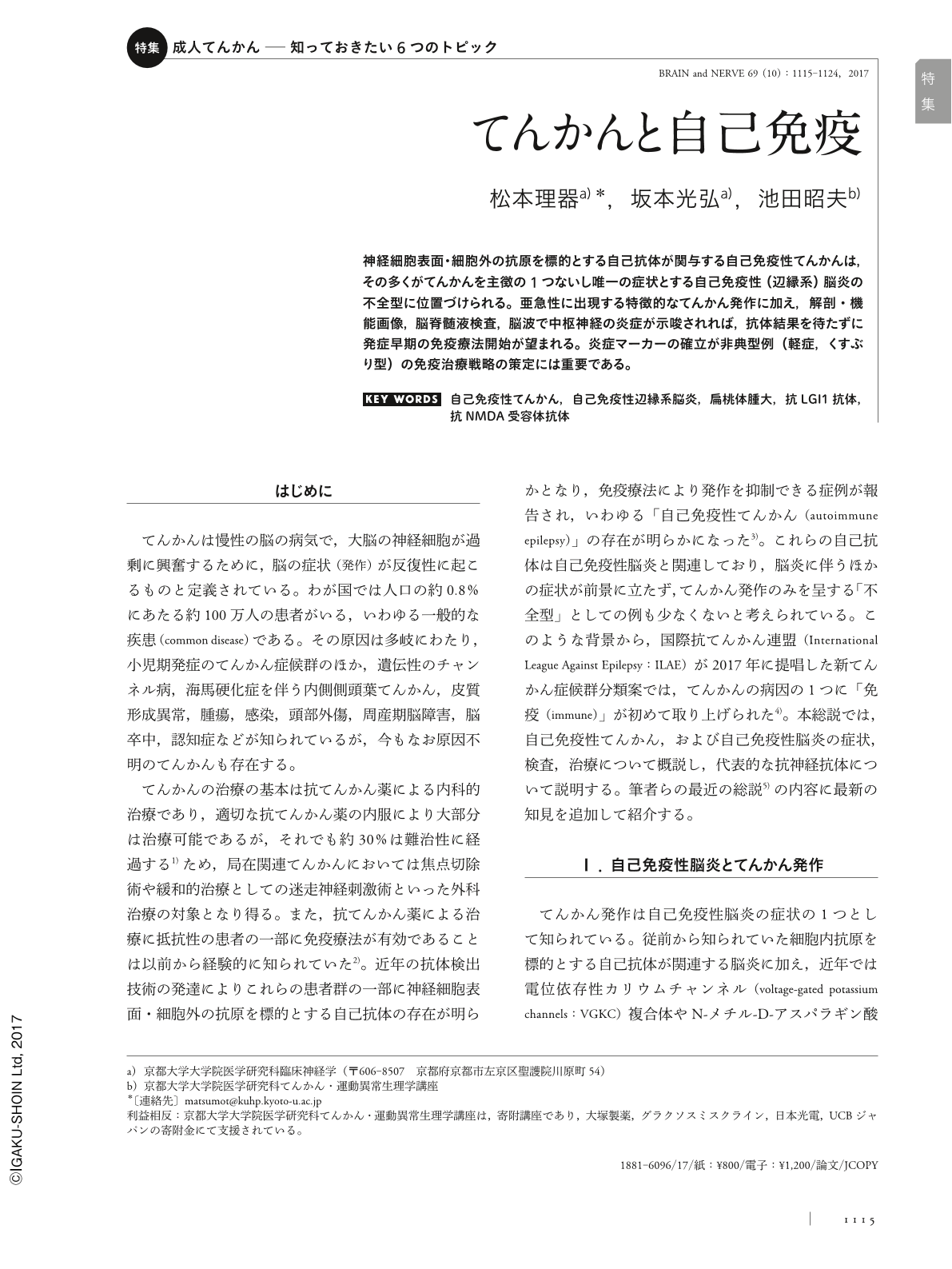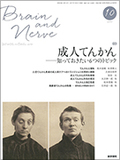Japanese
English
- 有料閲覧
- Abstract 文献概要
- 1ページ目 Look Inside
- 参考文献 Reference
神経細胞表面・細胞外の抗原を標的とする自己抗体が関与する自己免疫性てんかんは,その多くがてんかんを主徴の1つないし唯一の症状とする自己免疫性(辺縁系)脳炎の不全型に位置づけられる。亜急性に出現する特徴的なてんかん発作に加え,解剖・機能画像,脳脊髄液検査,脳波で中枢神経の炎症が示唆されれば,抗体結果を待たずに発症早期の免疫療法開始が望まれる。炎症マーカーの確立が非典型例(軽症,くすぶり型)の免疫治療戦略の策定には重要である。
Abstract
The recent discovery of autoimmune antibodies to the neuronal cell surface membrane and extra- or intra-cellular proteins, such as NMDAR and LGI1, shed light on a proposed new etiology of epilepsy, namely, “autoimmune epilepsy”. A large part of this entity most likely belongs to a forme fruste of autoimmune (limbic) encephalitis. Seizures are usually subacute in onset and refractory to antiepileptic medications. Patients occasionally manifest multiple seizure semiologies, such as autonomic or faciobrachial dystonic seizures. They may develop other symptoms of autoimmune encephalitis to variable degrees. Clinical diagnosis of autoimmune epilepsy should be considered even before the results of antibody testing, when objective evidence of CNS inflammation, such as abnormal MRI (amygdala/hippocampal enlargement), FDG-PET (hypermetabolism), EEG (bitemporal spikes or subclinical seizure patterns) and/or CSF findings, are present. Early intensive immunotherapy could cure seizures and prevent the full-blown clinical manifestation of encephalitis. Some patients present with relatively mild clinical symptoms and/or MRI findings, and can have a smoldering course lasting years. Establishment of the biomarkers of the ongoing CNS inflammation, especially for the smoldering and the suspected autoantibody-negative cases, is warranted for tailored immunotherapy for both the subacute and chronic phases of the disease.

Copyright © 2017, Igaku-Shoin Ltd. All rights reserved.


